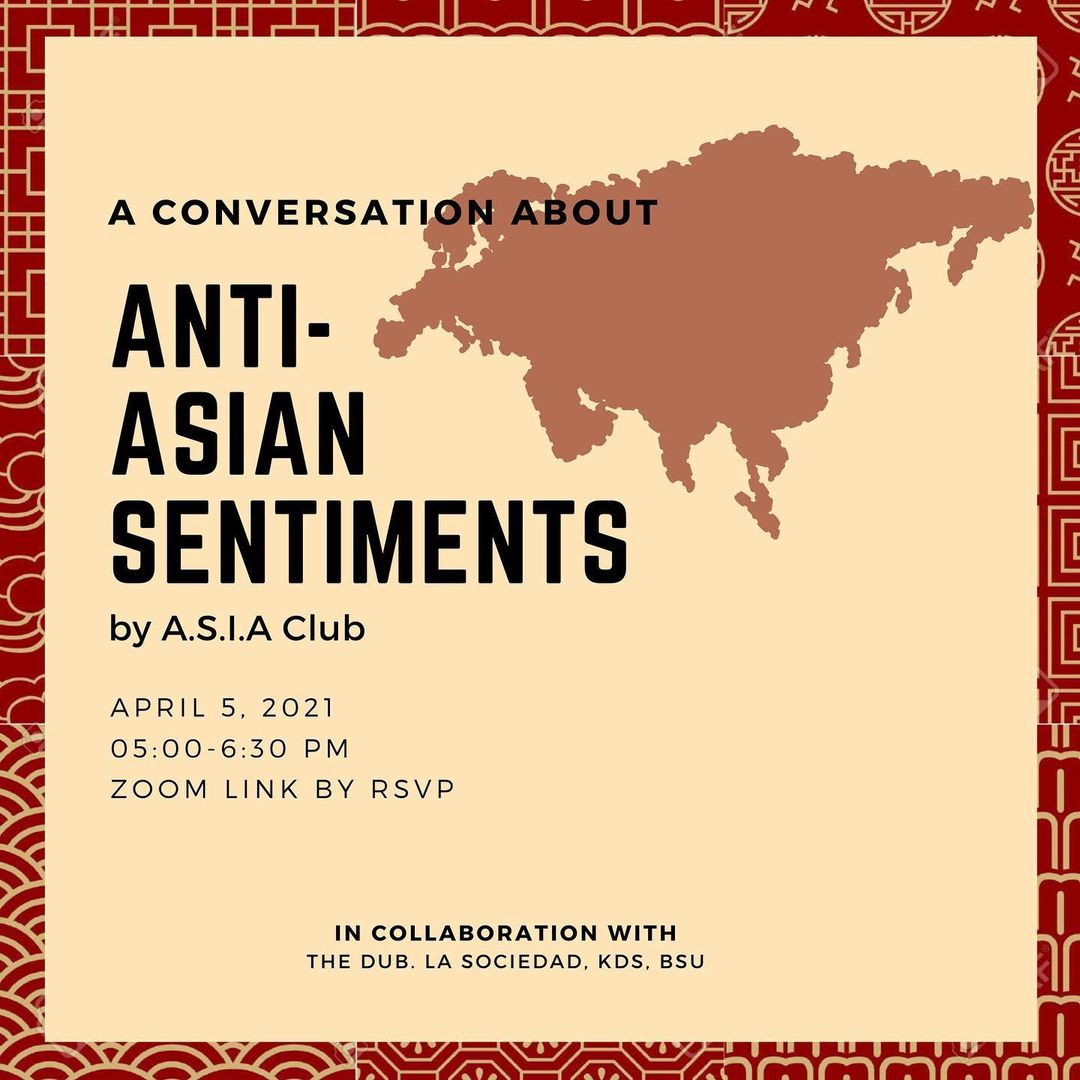A.S.I.A Club Conversation: Anti-Asian Sentiments
Anti-Asian violence increased by 150% in the year 2020, and as Iman Maani ’22 detailed during a panel presentation this past Monday, “The increase in anti-Asian violence seemingly coincides with the COVID-19 pandemic and the reechoing of the former 45th U.S. President’s references of COVID-19 as “kung flu” or the “China virus.” The panel presentation was the first component of a Zoom conversation addressing anti-Asian sentiments, which was organized by the A.S.I.A club in collaboration with the Dub, La Sociedad, KDS and the Black Student Union. Following the presentation, moderated breakout rooms were formed with an emphasis on community learning.
Within this conversation four sub themes were covered: the history of anti-Asian sentiments and violence in the United States, model minority myth, sexualization of Asian women and desexualization of Asian men, geography of the Asian continent, Covid-19, and media portrayals and trends. The topics listed were presented by Iman Maani ’22, Valerie Maldonado ’21, Avana Mohandesi ’21, Sara Moggaard ’23, Emily Grudzien ’21 and Rahel Mideksa ’21.
As a representative of the Dub, Grudzien assisted in the presentation of the sexualization of Asian women and the desexualization of Asian men. “I think it’s important for everyone to acknowledge the capital they have within our institution, and as a white, able-bodied, cis woman, I hold a lot of privilege at this university,” stated Grudzien. She further detailed that responsibility comes along with this privilege to ensure that BIPOC students are not the only people on campus spreading awareness about discrimination throughout the SLU community. “I also try to make sure I am a participant in the conversation whenever possible, not dominating it but making sure BIPOC students have the opportunity to speak,” she continued.
Michael Yirenkyi ’22 also touched on the need to intentionally make spaces for underrepresented voices. “I think [we need to listen to] more of these kinds of problems that students on campus are going through and facing…Listening and amplifying,” he stated. Yirenkyi also detailed how the idea of power and power relations were topics of discussion within the breakout room he was a part of. “We talked about acknowledging those different types of power and we could use our power to sort of bring more attention to the issue at hand, which [is] anti-Asian sentiments,” he said.
Maddie Olaynack ’23 shared that the breakout room discussion she participated in pertained to the responsibility that the theme house community needs to acknowledge. “We need to take the responsibility to educate ourselves and our peers because we have the platform to communicate with a large amount of students,” said Olaynack. She also acknowledged that such conversations should not fall in the hands of BIPOC and AAPI organizations on campus. “We also discussed how theme houses are predominantly white spaces, and the ways we can work to rid of the inherent biases within our application processes and our events that perpetuate these white spaces,” continued Olaynack.
Following the sharing of main takeaways and community action goals, the conversation ended with a list of resources and actions students, faculty and staff can take to stand with the AAPI community. One possible course of action is to diversify your Instagram feed by following accounts such as @kimsaira, @stopaapihate, @advancing_justice_atl, @aaajalc, and @teachandtransform (just to name a few from the presentation). Diving into some new reading material is another course of action we can all take. Here are some suggestions from the panelists: The making of Asian America: A history by Erika Lee, Driven out: The forgotten war against Chinese Americans by Jean Pfaelzer, Contagious divides: Epidemics and race in San Francisco’s Chinatown by Nayan Shah, Serve the people: Making Asian America in the long sixties by Karen L. Ishizuka, and Orientals: Asian Americans in popular culture by Robert G. Lee. And for students, intentionally take courses that challenge you and address topics outside of the realm of white, westernized thought.



